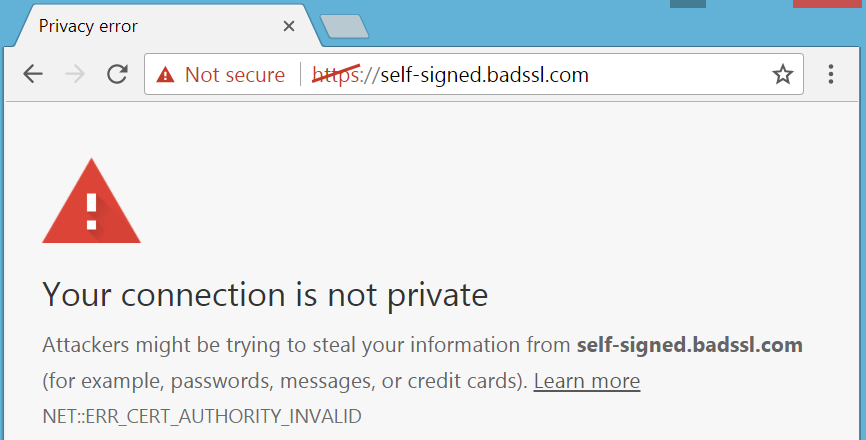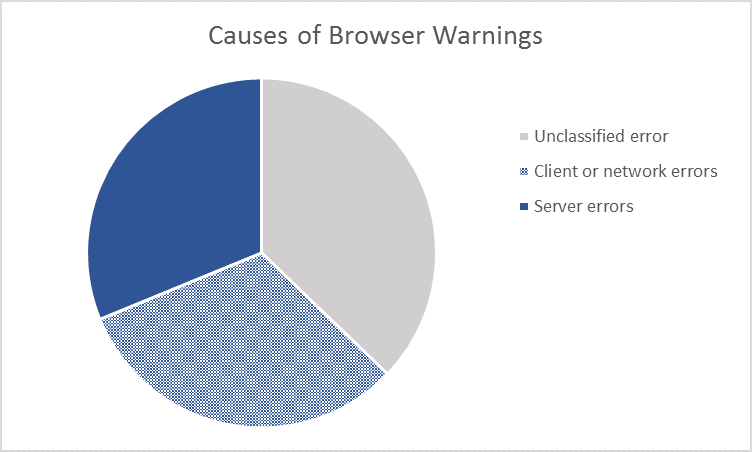How to prevent browserwarnings
We all come across them sometimes: a browser warning that shows your connection to a website is not safe. Depending on the browser you use and the possible extra settings, a user has a choice between canceling the website visit or continue the visit despite the warning. Some browsers prevent you from visiting the website completely. As a server administrator you can fix many warnings yourself.

A browser warning in Firefox
The purpose of browser warnings
The purpose of a browser warning is clear: to protect internet users from visiting potential insecure websites where their personal data can be abused. Unfortunately, there are many different browser warnings, and the exact content of a warning also differs per browser. Furthermore, not all warnings are relevant. This results in internet users getting used to those warnings andmight end up ignoring them.
Last year Google analysed 300 million browser warnings during a year. The aim of this extended research was gaining more insight in which warnings occur. This enables website administrators to fix most warnings. This way, the remaining warnings might be taken more seriously by internet users.
Causes of browser warnings
Google's research shows that approximately 1/3 of the warnings are server related and 1/3 is client- or network related. Client warnings occur when the clients' browser is unable to validate an SSL certificate, caused by for example the use of an ant-virus program or a wrongly set clock. Network warnings are things like a load balancer with a wrong configuration or configuration errors in the DNS.
Server related warnings occur if a web server uses a invalid certificate or wrong settings. As a server administrator you can fix these warnings yourself.

For easily checking your HTTPS settings, many tool are available:
- The SSLCheck enables you to check whether your certificate is still valid, the right algorithm is used (SHA-2 is the current standard), if the intermediate certificates are installed correctly and all the other settings are up to date.
- With SSLLabs you can run a scan that thoroughly checks the SSL configuration of a specific domain.
- In our knowledgebase you can find solutions for the most common SSL configuration issues.
Please contact our support department if you need assistance!
SSLCheck
Our SSLCheck will examine your website's root and intermediate certificates for correctness and report any potential issues

